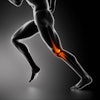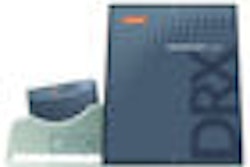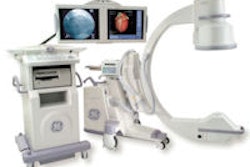A University of Pennsylvania study of acute chest pain patients found that cardiac CT angiography (CTA) was a better triage method than the traditional standard of care, according to results presented earlier this month at the American College of Radiology Imaging Network (ACRIN) fall meeting.
Researchers compared the costs and clinical effectiveness of providing immediate coronary CTA scans to several other diagnostic algorithms, including admission for observation, electrocardiographic (ECG) gating, and serial cardiac enzyme tests, followed by stress testing and catheterization as warranted. Immediate CTA had the lowest cost among four treatment options, the researchers found, and no acute coronary syndromes have been reported among patients discharged with a negative coronary CTA.
The encouraging results are the latest in a spate of mostly single-center, nonrandomized studies demonstrating lower costs of care and better patient outcomes when cardiac CT is used sooner rather than later in the workup of chest pain patients.
At the Hospital of the University of Pennsylvania (HUP), the use of coronary CT angiography to rule out coronary artery disease in chest pain patients rings up less than half the costs of standard care, while reducing admission rates by more than two-thirds, according to study chair Dr. Harold Litt, Ph.D., chief of cardiac imaging at the University of Pennsylvania Health System in Philadelphia.
The flood of patients presenting to U.S. emergency department with acute chest pain constitutes a "significant public health problem," Litt said at the ACRIN meeting. "Eight million presentations per year, almost all of whom will have a final diagnosis other than MI [myocardial infarction] or ACS [acute coronary syndrome], leads to a lot of unnecessary hospital admissions at a very high cost to society," he said. "But there's a high downside to missed diagnosis, which, even with the techniques currently available to us, still occurs in up to 5% of patients."
What's really needed is a test with a miss rate of 1% or less to enable facilities to discharge patients with reasonable confidence that they're not having a heart attack or unstable angina, he said. Litt added that there is pretty good evidence that clinical examination, patient risk factors, and biomarkers do not provide such assurance.
The thrombolysis in myocardial infarction (TIMI) risk score, based on a combination of patient history and presentation risk factors, is widely used to evaluate the risk of heart attack in patients presenting with chest pain (Journal of the American Medical Association, August 16, 2000, Vol. 284:7, pp. 835-842).
At Litt's institution, patients with TIMI scores in the intermediate (3-4) and high-risk (5-7) ranges are admitted appropriately, he said, but this still leaves a lot of low-risk patients (0-2) with a 5% or greater risk of having a heart attack in the next two weeks.
"At HUP we have about 2,000 ACS presentations per year, and two-thirds are low-risk so it's a large group of people," he said. "If either the ECG or the first cardiac enzyme test is positive, the patient is admitted for observation and sometimes stress testing."
Unfortunately, stress testing doesn't really help in this population. People who have a previous negative stress test versus no prior stress test have the same admission rate, the same recidivism rate, and the same catheterization rate, he said.
On the other hand, patients who undergo conventional invasive coronary angiography are less likely to have to return to the emergency department, less likely to be rehospitalized, and more likely to be satisfied with their treatment, he said. Some studies have shown that catheterization leads to a better understanding of disease, he said.
Could CT improve diagnostic accuracy and workflow by excluding patients who don't need catheter angiography, and the expense that goes with it? HUP physicians hypothesized that it could in low-risk patients with TIMI scores of 0-2.
Their prospective study, which has imaged 1,000 patients so far, aims to assess the safety of a CT rapid rule-out strategy for chest pain, and whether it can stratify risk more rapidly and more cost-efficiently than traditional care. At the ACRIN meeting, Litt discussed the results for the first 568 patients in the study, which is currently in press.
HUP is an urban tertiary care center with cocaine use reported in 7% of patients. More women (68%) than men (44%) were evaluated, and the study population consisted of about two-thirds (68%) African-Americans, Litt said.
Patients presenting with acute chest pain and normal or near-normal ECG results with normal initial cardiac enzymes and a low TIMI risk score ranging from 0-2 were scanned with coronary CT angiography, he said. By they time they get to radiology they're ready for their scans, too, because the ED staff has already initiated serum creatinine measurements and administered beta-blockers for patients with heart rates 70 bpm and higher. All patients undergo noncontrast coronary artery calcium scanning prior to coronary CTA, Litt said.
"It's a nice workflow for us," he said, because radiology doesn't have to prep the patients, or even know they're coming into the department.
New scanners were installed in the hospital over the course of the study, Litt said. As a result, several scanners from Siemens Healthcare of Malvern, PA, were used, ranging from 16-slice (Somatom Sensation 16) to 64-slice (Somatom Sensation 64) to dual-source CT (Somatom Definition).
For the average patient, radiation doses for retrospectively gated studies generally ranged from 6-8 mSv to around 4 mSv for recently initiated prospective gating protocols, Litt said. For a 350-lb patient the dose might rise to 20-25 mSv, comparable to the dose of a nuclear stress test. Most recently, dual-source CT scanning has enabled the scanning of patients with heart rates of 70 bpm and higher.
Patients with calcium scores ≥ 400 did not receive a contrast injection for coronary CTA, but instead proceeded directly to cardiology, as did patients who had observed lesions of 50% or greater at CTA, or positive cardiac enzymes at presentation.
Patients with stenoses of 50% to 70% at CTA underwent nuclear stress testing at the facility, while those with severe stenoses of 70% or greater were sent to coronary angiography. For study purposes, patients were contacted by telephone at 30 days and one year, with a medical record review at one year, Litt said. The 30-day telephone response rate was 92%.
After coronary CTA, patients with no stenosis ≥ 50% and no explanation for the chest pain (such as severe pneumonia) that would require admission were discharged with a written explanation of the CT results. In any case, the attending physician in the ED could decide to keep even a patient with negative CTA for further observation and testing. Results to date show a negative CTA rate of 89% (508 of 568), he said. And so far, no patient discharged with a negative coronary CTA has had a myocardial infarction.
"In terms of patients who had immediate CT, 85% are being sent home as opposed to the [traditional care] protocols where two-thirds are admitted to the hospital," he said. "We still have 15% who are getting admitted either because they have an alternative diagnosis requiring admission, or an ED physician who says 'I really want to see what's going on with this patient.' " In addition, five patients with positive CTA were discharged.
Most patients with negative CTA results underwent no further testing, but the results of follow-up stress testing in 11 patients were negative in all cases, and all 32 negative CTA patients who ended up in the cath lab were negative as well, Litt said.
All patients with 70% or greater stenosis on coronary CTA had stenosis at angiography as well, though many of the severe stenoses at CTA were deemed intermediate at angiography.
Among those patients who underwent stress testing, CTA results were positive in about half. Thus, CTA detected some incidental coronary artery disease that was not causing the patient's chest pain on the day of presentation.
"All of the patients who went to cath did have disease, so I feel pretty good about the fact that with 568 patients, we ended up having 11 caths, which is a very, very low cath rate (2%) [compared to] a stress test protocol, where 20% of those people have caths."
Based on a 50% stenosis cutoff, the sensitivity of CTA was 100%, with specificity of 91.5%. The positive predictive value was low (13%), again due to the detection of incidental coronary artery disease, Litt said.
Traditionally, 20% of chest pain patients present again to the ED within a month, but among CT-negative patients in the study the return rate was just 2%, compared to 7% in the traditional care group, Litt said. Therefore, CT reduced the 30-day readmission rates in low-risk patients.
Finally, the cost of care was substantially lower for patients undergoing a CT-first protocol. Total facility costs per patient were $1,240 for immediate coronary CTA, $2,318 for observation followed by CTA, $4,024 for observation followed by stress testing, and $2,913 for patients admitted to the hospitalist service for traditional care, he said.
The group is planning a new randomized study of CTA versus traditional care in more than 1,000 chest pain patients, Litt said.
By Eric Barnes
AuntMinnie.com staff writer
October 14, 2008
Related Reading
Flexibility of 320-slice CT boosts cardiac imaging options, October 3, 2008
Coronary CTA cheaper for chest pain than standard care, September 19, 2008
Fourth-generation MDCT scanners do cardiac differently, July 8, 2008
Coronary CTA cuts costs for chest pain care, February 29, 2008
Radiation dose slashed in 64-slice coronary CTA, February 15, 2007
Copyright © 2008 AuntMinnie.com



















